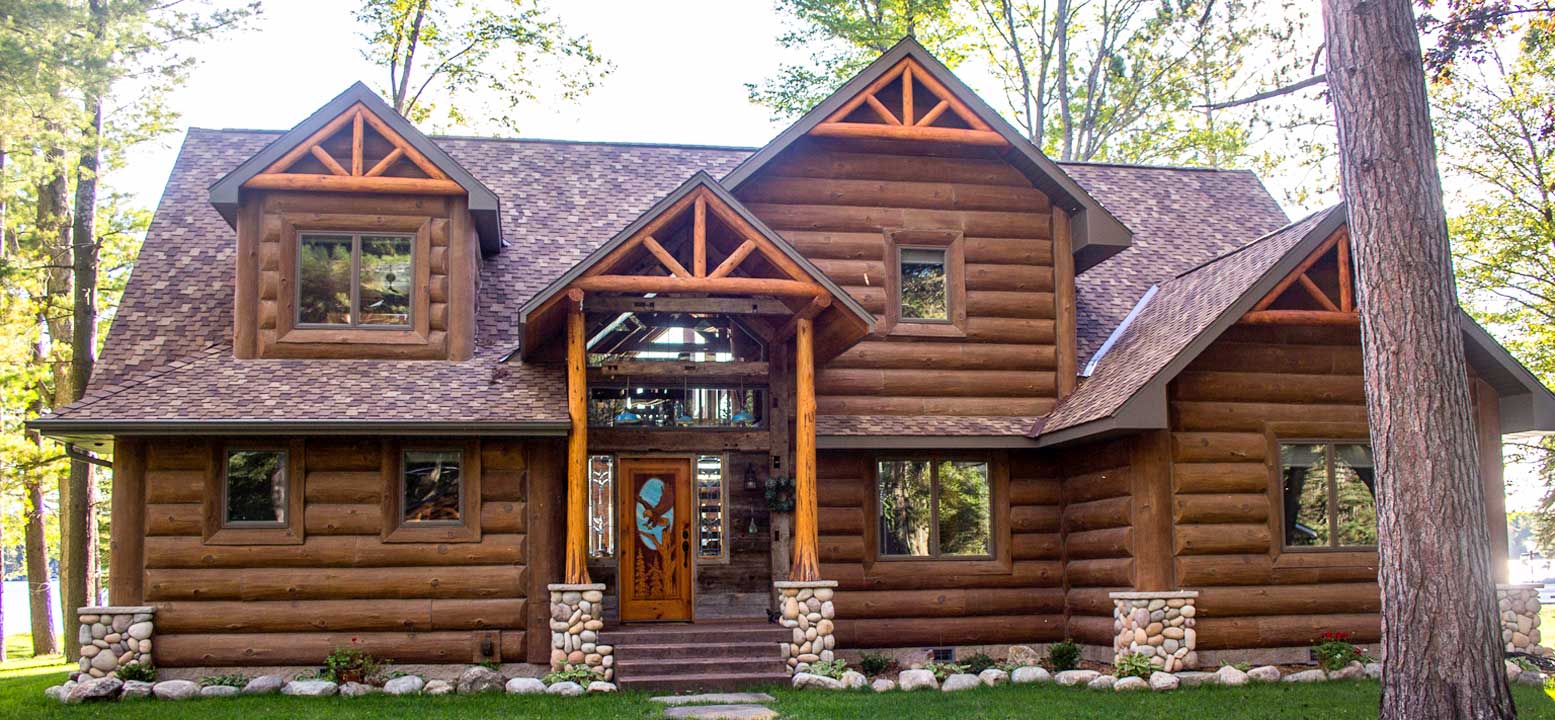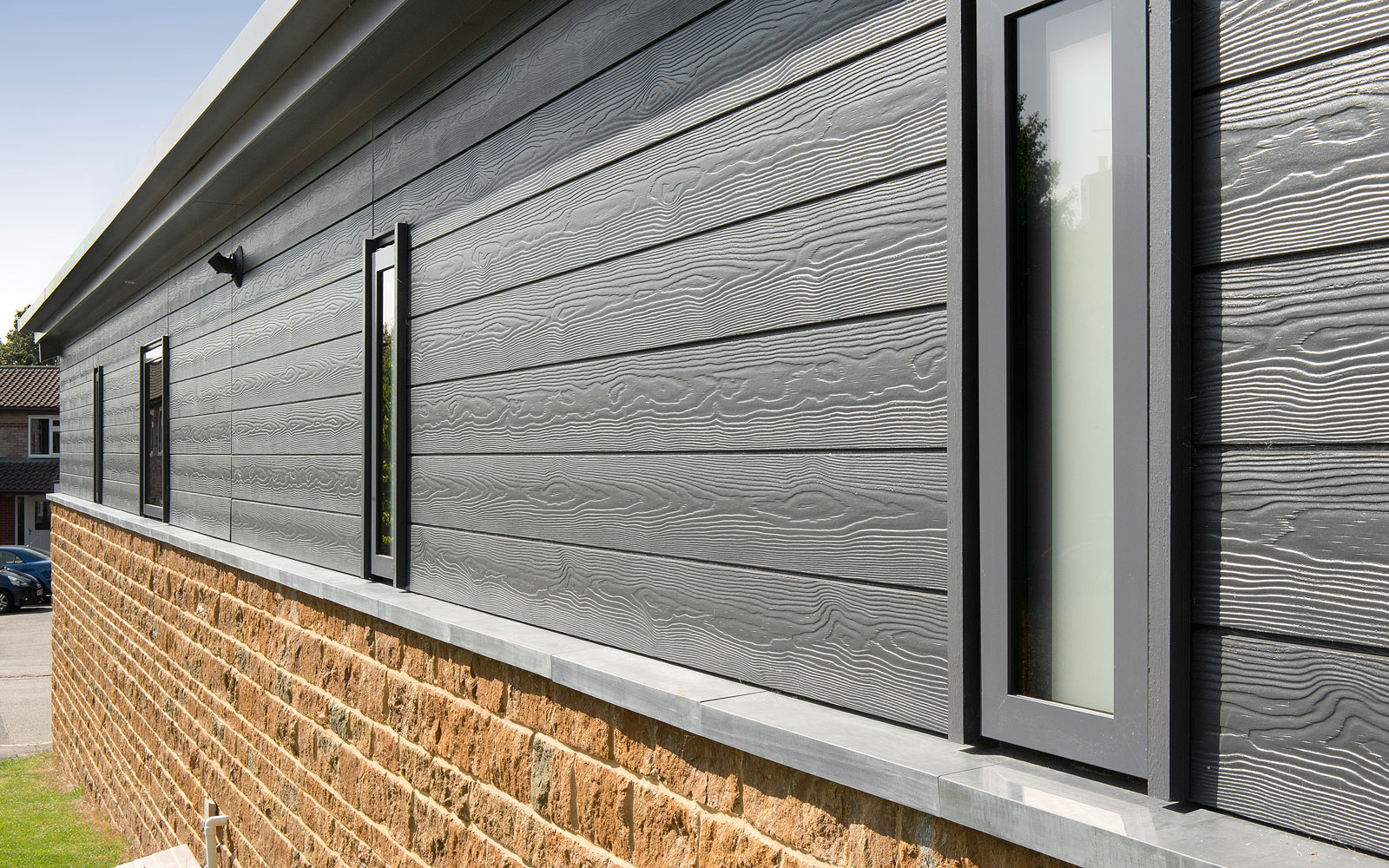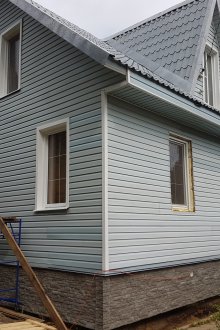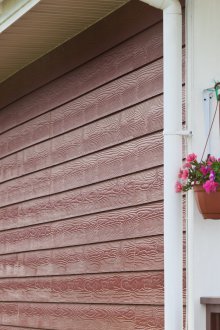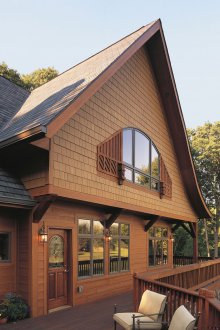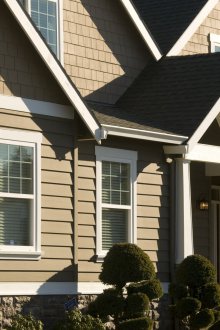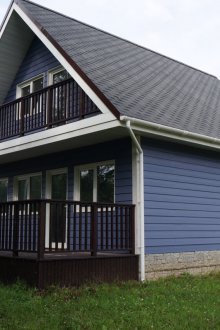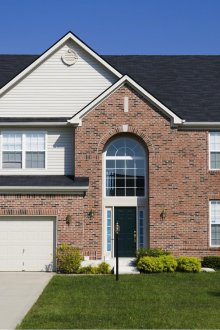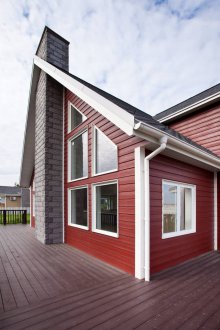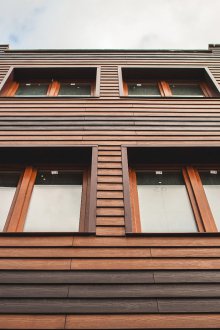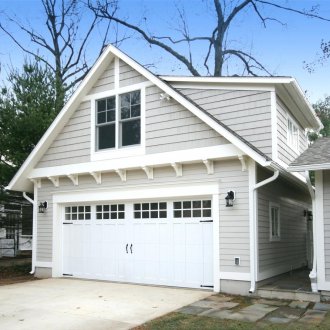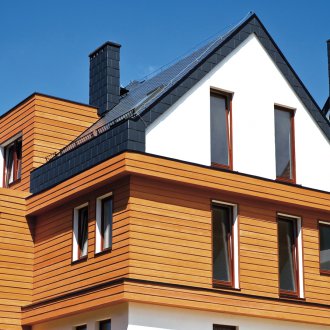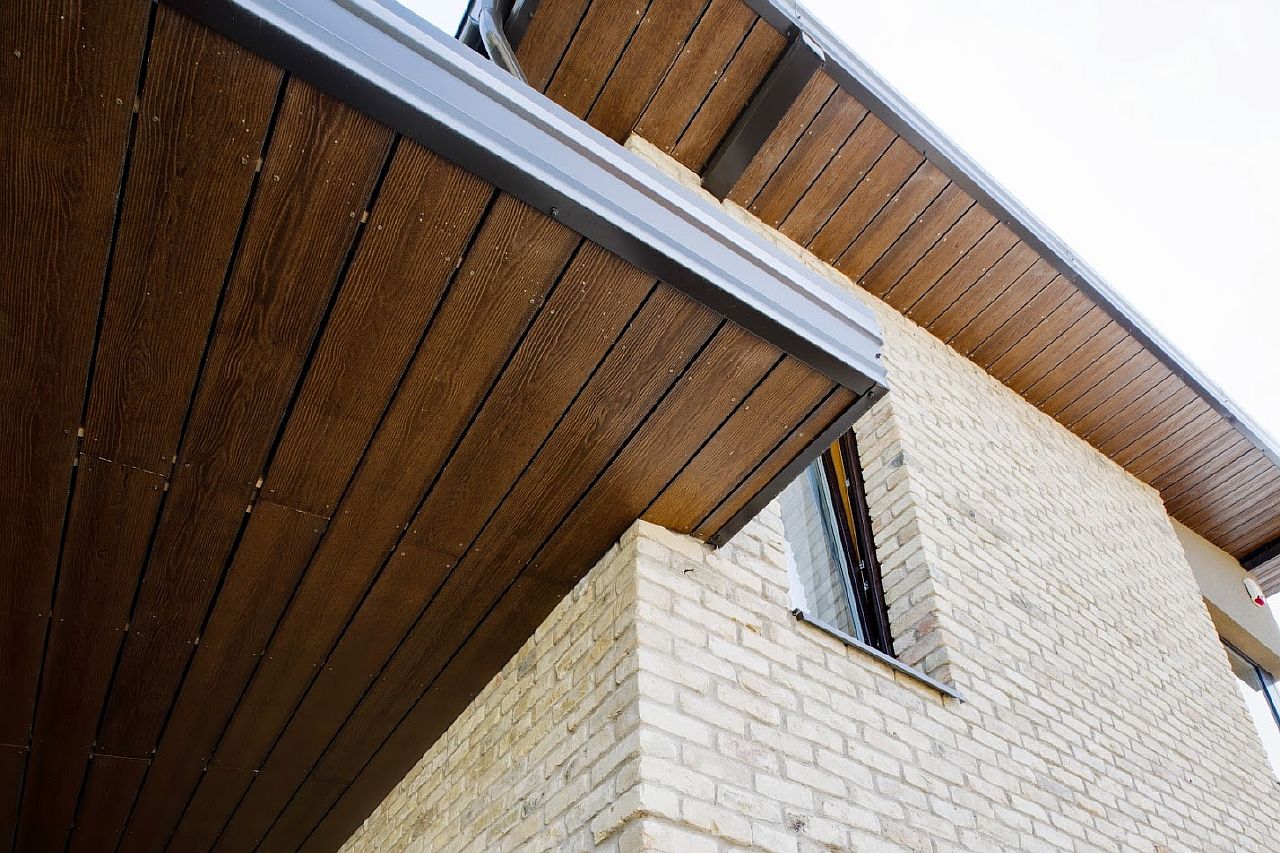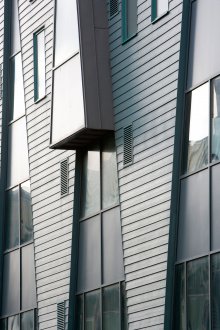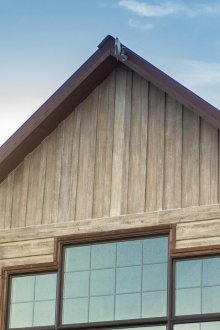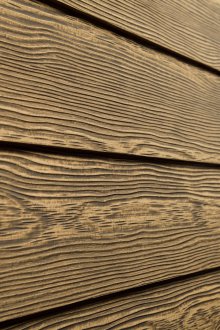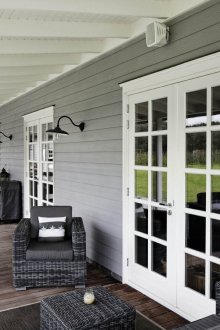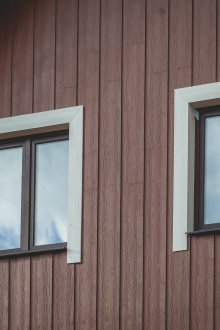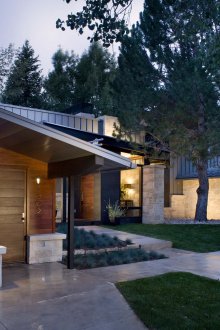Fiber cement siding: the possibility of durable imitation (22 photos)
Content
Hinged facade systems are very popular today. They allow you to finish the house at a fast pace, install an additional layer of insulation material. An important advantage of most of these materials is their low weight, which reduces the load on the foundation. The greatest variety is characterized by facade siding, created from different materials.
One of its types is fiber cement siding, which is environmentally friendly and practical. The lining of it is impressive with realism, the panels are difficult to distinguish from natural wood or brick, not only in color, but also in relief texture.
What is fiber cement siding?
The popularity of vinyl siding is based on its affordable price, but buyers are constantly having doubts about its fire safety and frost resistance. Metal siding meets the strict requirements in the field of fire resistance, is resistant to temperature extremes, but its aesthetic characteristics are not the most outstanding. Analysis of the shortcomings of these materials and the search for an alternative served as the reason for creating siding from fiber cement. It consists of sand, cement, water and cellulose fibers, reinforcing panels. Fiber cement siding is available in wood, brick and natural stone.
The main advantages of the material
In the domestic market, this finishing material was not so long ago, but it quickly gained popularity among property owners due to its following advantages:
- perfectly imitates the texture and relief of natural materials;
- has high strength characteristics - not inferior to concrete;
- as a part of environmentally friendly materials;
- resistance to solar ultraviolet radiation;
- wide color gamut, characterized by natural shades;
- cladding life of at least 50 years;
- easy installation, accessible to non-professionals;
- increased resistance to severe frosts;
- easily tolerates temperature changes;
- it doesn’t burn, and in case of fire it does not emit toxic or unhealthy substances into the air;
- low water absorption;
- lack of wet processes during installation work;
- panels are not subject to corrosion;
- light weight.
It is recommended to finish with fiber cement siding for homes or commercial real estate, created in various architectural styles. The material goes well with natural stone, decorative plaster, brick, ceramic and bituminous tiles.
Types of fiber cement siding
The leaders in material production are Japanese companies that produce a wide range of brick siding. They offer dozens of shades, collections imitating clinker, hand-molded bricks and fired bricks. The colors are so natural, and the texture and relief are accurate, it is difficult to distinguish between brick siding from the classic masonry, made by the hands of an experienced bricklayer. Such a facade made of fiber cement siding will decorate a respectable cottage, a fashionable hotel or a luxury specialized store.
Fiber cement siding that imitates wood looks no less spectacular.Manufacturers have chosen natural shades of natural, and the relief texture in detail reproduces the surface of a wooden board made of cedar or Angarsk pine. Surprisingly, the panel is also easily sawn with a hacksaw, like wood, but unlike it does not burn and does not support combustion. This is an important feature that attracts owners of country houses, cottages, holiday homes and motels. Unlike wood, fiber cement is not subject to decay, it does not require regular processing with protective compounds.
Fiber cement siding under a stone is very popular, it is no less realistic than a brick or wood collection. The material imitates in detail the complex surface of natural stone, and for greater similarity in the manufacture of fiber cement, marble chips, mica and quartz are added to it. In this case, the weight of the cladding is significantly less than that of the stone and is 15-20 kg per square meter. In this parameter, the material is inferior to clinker or ceramic bricks, which allows it to be used in houses built on light foundations.
Main applications
Siding under a brick or wood made of fiber cement can be used as a facade material in the construction of the following objects:
- cottages;
- country houses;
- preschool institutions;
- public buildings;
- business centers;
- holiday homes;
- Hotels
- motels.
You can use facade material in all climatic zones of our country.
Siding for a socle is well established; its practical and strength characteristics are not inferior to concrete or stone. At the same time, the technology for finishing the basement is available to any home master. The material is used for finishing cornices, chimneys, fences, arbors and garden pavilions.
Installation of fiber cement siding
Before starting work, it is recommended to calculate the amount of material using special calculators. They take into account the overlap and the percentage of waste, allow you to accurately determine the number of panels. You can do the calculation yourself, while paying attention to the useful width of the panel and its fixed size.
Installation is carried out on a crate of 30x50 mm timber, which is fixed to the supporting wall with powerful self-tapping screws, nails or anchors. The installation technologies of thermal insulation, waterproofing, wind insulation, vapor barrier, inherent in all hinged facades are observed. Wood-based panels are fixed with a vertical overlap of at least 30 mm. Installation is carried out from below and the initial level is installed first.
Fiber cement panels are fixed to the crate in an open or closed way. Hide fastening allows special clips, latches, fixing panels and pressing them to the crate. The advantage of this method is the absence of violations of the siding integrity. However, the material tolerates drilling well and this method of installation is called open. When carrying out work, a number of rules are observed - holes for self-tapping screws are drilled to the places of the greatest thickness of the panel, departing from the edge of at least 20-30 mm.
After completing the basic installation work, it is recommended to install corners - external and internal. They not only protect the joints from rain or snow, but also give the building a complete and holistic look. Manufacturers of fiber cement siding produce all the necessary components for high-quality installation of this facade material.
Fiber cement siding is a modern facade material with a wide range of applications. Its only drawback is its high cost, but given that it is still a novelty in the domestic market, there is hope for a gradual reduction in prices. In any case, the facade of fiber cement is even cheaper today than finishing with high-quality facing bricks or imported clinker.
Metal and vinyl siding fiber cement panels are superior in aesthetic characteristics and durability, usability and variety of collections, environmental friendliness. This material will bring a lot of positive emotions to property owners, both during installation and maintenance of the facade throughout its life.


